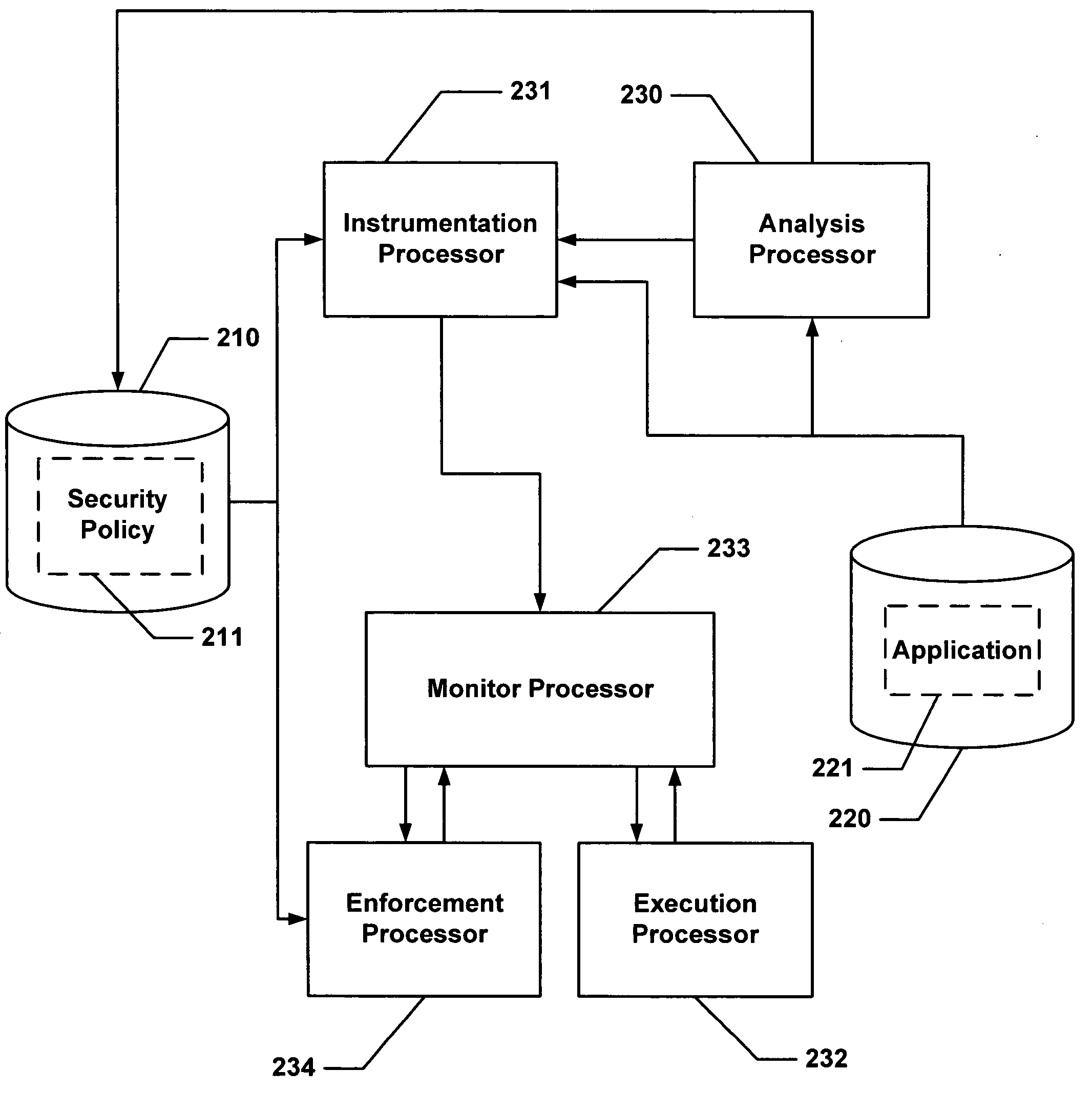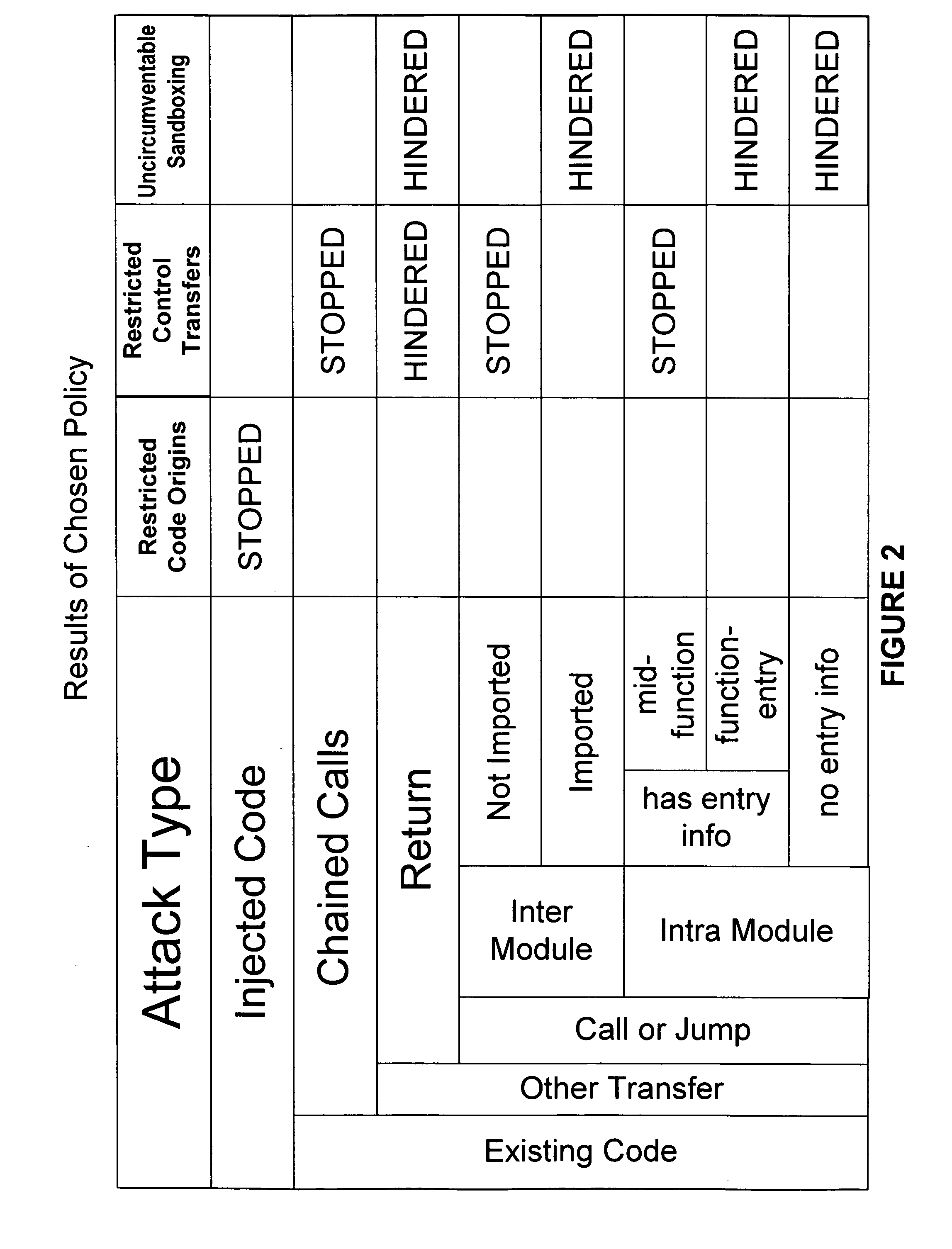Secure execution of a computer program using a code cache
a computer program and code cache technology, applied in the field of secure computer systems, can solve the problems of worm propagation, unauthorized memory use protection, remote exploitation of program vulnerabilities, etc., and achieve the effects of preventing the spread of worms, and preventing the spread of viruses
- Summary
- Abstract
- Description
- Claims
- Application Information
AI Technical Summary
Benefits of technology
Problems solved by technology
Method used
Image
Examples
example implementation
One example of a method for implementing the present invention is by instrumenting the application and library code prior to execution in order to add security checks around every branch instruction and privileged operation. A few possible embodiments of such an implementation are described at an abstract level in FIGS. 4, 5, and 6. Another possible implementation is to use an interpreter or emulator. Interpretation is the most straightforward solution to provide complete mediation of control transfers on native binaries. It is a natural way to monitor program execution because every application operation is carried out by a central system in which security checks can be placed. One possible embodiment using an interpreter is described in detail starting from FIG. 8.
Another example of an implementation of the present invention is to use a low-overhead software system that creates, examines, and modifies execution traces. Such a system provides the exact functionality needed for e...
second embodiment
FIG. 12 is an abstract block diagram of the This is an expansion on the configuration described in FIG. 7 where analysis, instrumentation, monitoring, execution and enforcement are all done at runtime. However, note that an analysis pass performed before runtime can be used to create an application-specific policy.
Execution is divided into two modes: Runtime System Mode and Application Mode. The Runtime System controls the overall operation: putting application code fragments into the Code Cache, starting those code fragments running in Application Mode and controlling security policy.
The system is designed so that the application code running in Application Mode runs in its own context to preserve transparency, and limiting interaction with code operations and data allocations done by the Runtime System. Hence there is a context switch between transitions between Application Mode and Runtime System Mode.
Other parts of the system are designed to avoid context switches by stayi...
PUM
 Login to View More
Login to View More Abstract
Description
Claims
Application Information
 Login to View More
Login to View More - R&D
- Intellectual Property
- Life Sciences
- Materials
- Tech Scout
- Unparalleled Data Quality
- Higher Quality Content
- 60% Fewer Hallucinations
Browse by: Latest US Patents, China's latest patents, Technical Efficacy Thesaurus, Application Domain, Technology Topic, Popular Technical Reports.
© 2025 PatSnap. All rights reserved.Legal|Privacy policy|Modern Slavery Act Transparency Statement|Sitemap|About US| Contact US: help@patsnap.com



